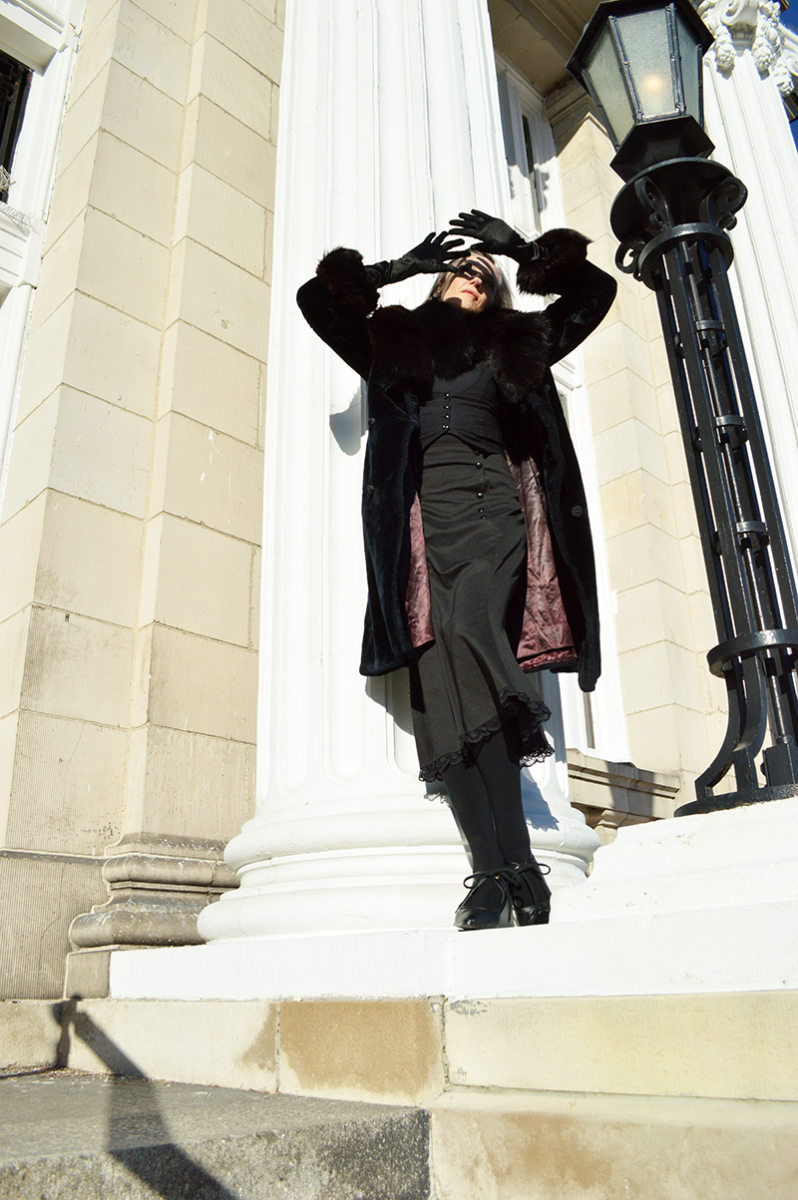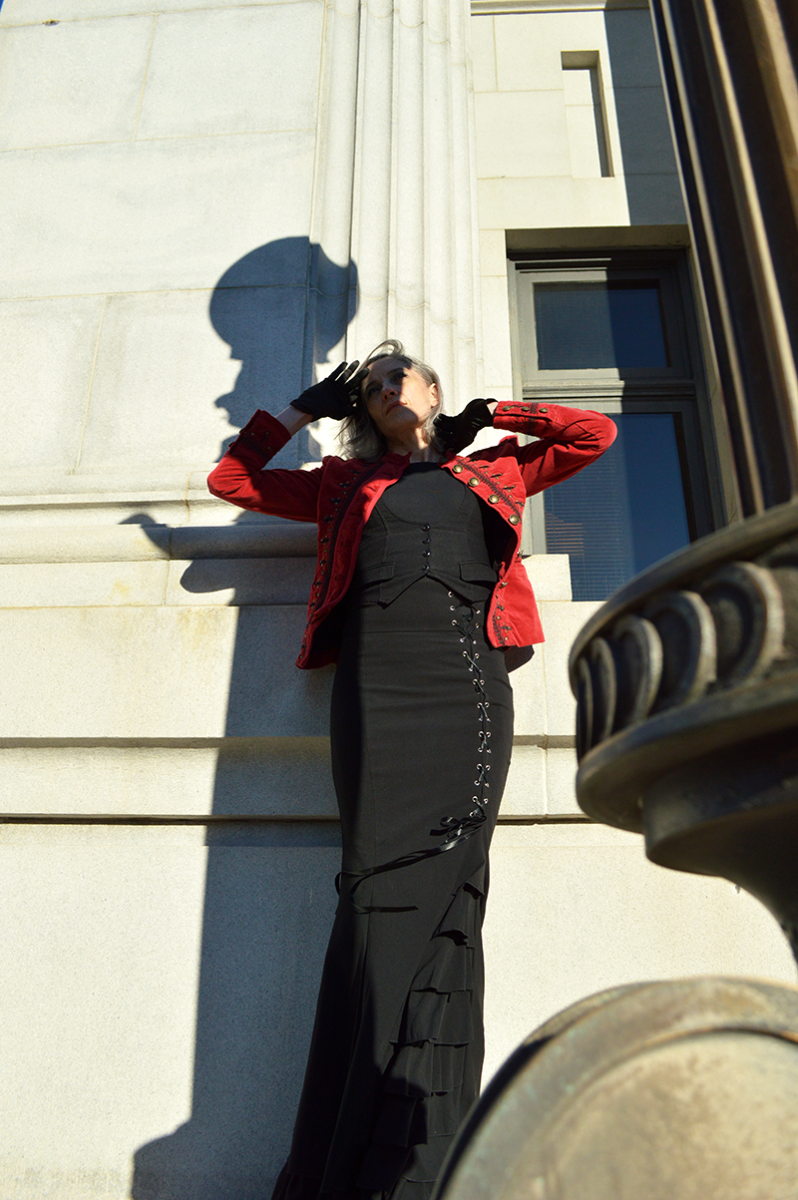
featuring Model: Emma Rocherolle
as my Scorpio on the Full Pink Moon
Photograph by Michelle Gemma
shot with the Mamiya 7
on Ilford Delta 400 Pro film
Inspiration: Flatliners by Peter Filardi



Having a vast grasp of what is possible and of what is asking to be brought in, while extended very far into regions others miss.

Feeling, hearing, tasting the power of spirit in action.

Half mesmerized and half supercharged to get everybody in on it somehow.

Perhaps retreating to more traditional versions of the infinite path if frightened by a lack of understanding coming back.

Communing with the mysteries, and absolutely at home within those places others find strange.

The inside becomes all, the outside virtually transparent to the light within…
inspired by PISCES 26: “The Aurora Borealis.” by Elias Lonsdale
https://aquaorfire.net/astrology/inside_degrees/inside_degrees.html
Saturn takes about 28-29 years to come full circle.
Saturn transits and cycles can be considered cycles of achievement and maturity. When Saturn forms a hard aspect to a personal point in our chart, we might feel that everything is slowed down–we encounter delays, frustrations, and pressures. But these times also challenge us to face reality, thereby opening ourselves up to increased wisdom and the freedom that comes with living in truth.
cafeastrology.com
featuring Model: Carol W.
as Pisces and her Saturn Return
8 March 2021
Westerly, Rhode Island, USA
all photographs by Michelle Gemma
Dec 17, 2020 12:04 AM EST Saturn entered Aquarius…
Carol was born with Saturn in Aquarius at 24 degrees!
This is Saturn Return.
This is the sixth planet from the Sun and the second largest planet in our solar system. Adorned with a dazzling system of icy rings, Saturn is unique among the planets. It is not the only planet to have rings, but none are as spectacular or as complex as Saturn’s. Like fellow gas giant Jupiter, Saturn is a massive ball made mostly of hydrogen and helium.
Surrounded by more than 60 known moons, Saturn is home to some of the most fascinating landscapes in our solar system. From the jets of water that spray from Enceladus to the methane lakes on smoggy Titan, the Saturn system is a rich source of scientific discovery and still holds many mysteries.
The farthest planet from Earth discovered by the unaided human eye, Saturn has been known since ancient times. The planet is named for the Roman god of agriculture and wealth, who was also the father of Jupiter.
https://solarsystem.nasa.gov/planets/saturn/in-depth/
The Earth Goddess Demeter went to Eleusis in search of her daughter Persephone, who had been abducted by Hades , God of the Underworld.

Demeter goes in search of Persephone and, during her journey, reveals her secret rites to the people of Eleusis, who had hospitably received her. Her distress at her daughter’s disappearance was said to have diverted her attention from the harvest and caused a famine.

The Mysteries at Eleusis originated in the two-fold story of Demeter’s life—her separation from and reunion with her daughter and her failure to make the queen’s son immortal.

The Mysteries began with the march of the mystai (initiates) in solemn procession from Athens to Eleusis. The rites that they then performed in the Telesterion, or Hall of Initiation, were and remain a secret.

Another important aspect of Demeter was that of a divinity of the underworld; she was worshiped as such at Sparta, and especially at the festival of Chthonia at Hermione in Argolis, where a cow was sacrificed by four old women. The epithets Erinys (“Avenger”) and Melaina (“the Black One”) as applied to Demeter were localized in Arcadia and stress the darker side of her character.

featuring Model: Jane Anderson
all photographs by Michelle Gemma
The Full Snow Moon of February
in Virgo, Honoring the Myths of Seasonal Renewal,
for the Full Moon Photoshoots series
27 February 2021
Norwich, CT USA
source text: https://www.britannica.com/topic/Demeter
featuring Model: Carol W
Watch Hill, RI USA
Photograph by Michelle Gemma
for the series “Personal Universe”
An international day to celebrate the life and work of Welsh poet Dylan Thomas, held each year on 14th May, the anniversary of the date when Under Milk Wood was first read on stage at 92Y The Poetry Center, New York in 1953.
“International Dylan Thomas Day gives us a chance each year to celebrate Dylan Thomas’s achievements. There is still the enthusiasm for a national day to mark my grandfather’s life and legacy and we want to keep May 14th as a prominent date on the literary calendar.
Dylan Thomas’s writing has travelled through time – it is as relevant today in our troubled times as when it was written sixty-five years ago. It continues to travel across the globe reaching new audiences everyday. His poetry lives on.
We invite you to tell us about how you are going to mark the day and encourage you, wholeheartedly, to get involved and to love the words.” — Hannah Ellis, Granddaughter of Dylan Thomas
https://www.discoverdylanthomas.com/news-events/international-dylan-thomas-day
The photographer Rollie McKenna was at this 92Y reading of Under Milk Wood, to photograph Dylan Thomas, and she writes this in her autobiography, Rollie McKenna: A Life in Photography (Knopf, 1991),
“Dylan Thomas’s career didn’t truly take off until he ‘hit’ the United States. Readings at the Poetry Center and tours throughout the country where–in his own words–he ‘boomed and fiddled while home was burning,’ all but devoured him. The money he made, so necessary to support his family, passed through his fingers like water. The praise, so addictive, was fleeting. Still, he wanted to read again to his vastly appreciative American audiences and, above all, to write the final ending to his play for voices, Under Milk Wood.
Frenetic reading tours, sycophant-laden parties and late-night bar-hopping exhausted him, and just an hour before rehearsing the actors for the first New York performance of Under Milk Wood, Dylan was in particularly bad shape. On arriving at the Poetry Center, he vomited, declared that he could not possibly go on and collapsed in the green room. After half an hour, he was shaken awake. Pulling himself together, he directed for an astonishing three hours, urging the actors over and over: ‘Love the words. Love the words!’ I was so dumbfounded by his recovery that I almost forgot to shoot.
When the night of May 14, 1953, arrived, the theater was packed. The audience, silent at first, then tittering, finally exploded into laughter on realizing that this was no highbrow affair but a loving, ribald tribute to a village. Dylan took fifteen curtain calls as tears slipped down his face.”
https://www.nytimes.com/1991/11/17/books/pictures-from-a-life.html
In celebration:
featuring Model: Liz Walz
Stonington, CT USA
Photograph by Michelle Gemma
for the series “Personal Universe”
New Moon in Aries 24 March 2020
featuring Model: Lehla Cheyenne
as my Aries
First Sign in the Zodiac
First Shoot in my astrological series Personal Universe.
Welcome to the Terrordome:
“I got so much trouble on my mind
Refuse to lose
Here’s your ticket
Hear the drummer get wicked”
Photograph by Michelle Gemma
Stonington Borough, CT USA

featuring Model: Morgan Vail
as my Cancer
from the Personal Universe series
water signs in Pisces season
15 February 2018
Photograph by Michelle Gemma
“You live your life, you go in shadows
You’ll come apart and you’ll go blind
Some kind of night into your darkness
Colors your eyes with what’s not there”
lyrics from “Fade Into You” by Mazzy Star, from their second album, So Tonight That I Might See, released in 1993.
Spacecraft escaping the Solar System

Distance from Sun (AU) Pioneer 10: 125.220 Pioneer 11: 103.732 Voyager 2: 122.804 Voyager 1: 148.103 New Horizons: 46.357 
Speed relative to Sun (km/s) Pioneer 10: 11.934 Pioneer 11: 11.224 Voyager 2: 15.326 Voyager 1: 16.967 New Horizons: 13.975 
Ecliptic latitude Pioneer 10: 3° Pioneer 11: 14° Voyager 2: -37° Voyager 1: 35° New Horizons: 2°
Declination Pioneer 10: 25° 57′ Pioneer 11: -8° 57′ Voyager 2: -57° 58′ Voyager 1: 12° 2′ New Horizons: -20° 28′
Right ascension Pioneer 10: 5h 10m Pioneer 11: 18h 52m Voyager 2: 20h 2m Voyager 1: 17h 15m New Horizons: 19h 12m
Constellation Pioneer 10: Taurus Pioneer 11: Scutum Voyager 2: Pavo Voyager 1: Ophiuchus New Horizons: Sagittarius

Distance from Earth (AU) Pioneer 10: 124.471 Pioneer 11: 104.650 Voyager 2: 123.581 Voyager 1: 148.694 New Horizons: 47.317
One-way light time (hours) Pioneer 10: 17.20 Pioneer 11: 14.51 Voyager 2: 17.13 Voyager 1: 20.61 New Horizons: 6.5
Brightness of Sun from spacecraft (Magnitude) Pioneer 10: -16.2 Pioneer 11: -16.6 Voyager 2: -16.3 Voyager 1: -15.8 New Horizons: -18.4
Spacecraft still functioning? Pioneer 10: no Pioneer 11: no Voyager 2: yes Voyager 1: yes New Horizons: yes
Launch Date Pioneer 10: 1972-Mar-03 Pioneer 11: 1973-Apr-06 Voyager 2: 1977-Aug-20 Voyager 1: 1977-Sep-05 New Horizons: 2006-Jan-19 We discuss the five spacecraft which are leaving the Solar System on escape trajectories – our first emissaries to the stars. On this scale, the nearest star to the Sun would be approximately 100 meters away, and it would take Voyager 1 about 70,000 years to cover that distance.
We discuss the five spacecraft which are leaving the Solar System on escape trajectories – our first emissaries to the stars. On this scale, the nearest star to the Sun would be approximately 100 meters away, and it would take Voyager 1 about 70,000 years to cover that distance.
https://www.heavens-above.com/SolarEscape.aspx?lat=33.448&lng=-112.073&loc=Phoenix&alt=343&tz=Arizona
featuring Model: Caroline Longo
all photographs by Michelle Gemma
The Full Wolf Moon of January,
and Lunar Eclipse in Cancer
10 January 2020
Mystic, CT USA

 Spinning on that dizzy edge
Spinning on that dizzy edge







featuring Model: Emma Rocherolle
as my Scorpio
from the Personal Universe series v2
v1
https://michellegemmaphotography.com/personal-universe-2/
Photographs by Michelle Gemma
Lords Point, Connecticut USA
inspired by https://www.thecure.com/lyrics/just-like-heaven/